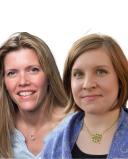Adverse Childhood Experiences
Sibling Aggression and Abuse Are ACEs
Sibling aggression and abuse have potentially trauma-inducing effects.
Posted July 2, 2024 Reviewed by Michelle Quirk
Key points
- Sibling aggression and abuse are linked to trauma-inducing harms across the lifespan.
- Modification of ACE inventories would aid recognition of sibling aggression and abuse and their impacts.
- Positive screenings necessitate training for practitioners and professionals on response and intervention.
“It impacted me horribly… I had a digestive disorder and PTSD by time I was seven. I was hypervigilant, had nightmares and ran survival scenarios through my mind… It was a struggle to keep myself going every day, and I prayed to die at night, since I couldn't see any other way out… There was a wall of secrets about the abuse that meant I couldn't be close to anyone and made me sure people would recoil in horror from me if they knew… My brother's abuse and how he terrorized me has impacted every day of my life negatively. I don't feel safe.”
– Testimonial submitted by a sibling abuse survivor to the SAARA Story Archive

Sibling Aggression and Abuse as Trauma-Inducing Harms
According to the U.S. Centers for Disease Control and Prevention (CDC), adverse childhood experiences (ACEs) are potentially traumatic events that occur in childhood, like violence, maltreatment, and events that undermine children’s feelings of safety. These experiences impact functioning across the lifespan, often through the body’s stress response system. Over time, the physical effects and emotional responses to stress take a toll on children’s mental and physical health, which can lead to impacts in adulthood like heart disease and suicide.
Significant numbers of children experience sibling aggression and abuse (SAA) each year and in their lifetimes. In the United States, more than a third of children aged 0 to 17 years old have experienced sibling physical, property, and/or psychological aggression or abuse. Estimates of the frequency that children are sexually abused by a sibling are between 2 and 5 percent.
SAA potentially are trauma-inducing harm. Children who live with siblings who harm them often do not feel safe at home. SAA are associated with negative impacts on children’s mental and physical health and their relationships with family members and peers. Adult survivors report ongoing impacts on their well-being, including struggling with depression, eating disorders, and relationship difficulties.
Research shows that SAA have similar or larger associations with well-being than some traditional ACEs, including child maltreatment and family violence. The impact of SAA on population-level public health may be similar to that of intimate partner violence and parent-to-child maltreatment.
Modify Existing ACE Inventories
Most widely used ACE inventories, based on the original ACE Study, restrict physical and psychological abuse to acts committed by “a parent or other adult in the household,” and sexual abuse to acts committed by “an adult or person at least 5 years older.” These age restrictions reflect the incorrect assumption that one child cannot seriously and enduringly harm another. To reflect what we now know about SAA, ACE screenings with children, parents, and adults should be broadened to explicitly include SAA.
Any modification, however, should be accompanied by training for practitioners and professionals in child protective services, law enforcement, school counseling, mental health, pediatrics, nursing, and other disciplines. These groups could be provided with the knowledge that sibling rivalry does not include an intent to harm or control, but, rather, sibling abuse does. Also, sibling abuse is not just a fight, with the harmed child shouldering some responsibility for it happening; it is a form of family violence. Like other forms of family violence that require specialized knowledge, SAA deserves expert recognition and response.
A goal of ACE screenings is prevention and intervention. A variety of established evidence-based parent education programs, such as The Incredible Years and Triple P Positive Parenting Program, can help reduce children’s aggressive behaviors and enhance parenting skills. Family resource centers, child advocacy centers, and pediatricians can help with referrals, and finding treatment for sibling abuse with therapeutic techniques that are used to treat child maltreatment may be helpful. Currently, specialized treatments for SAA do not exist.
For adults seeking help for well-being and relationship challenges, modified ACE screenings that are inclusive of SAA could provide needed insight and lead to the development of specific forms of trauma-informed therapeutic techniques aimed at healing the trauma caused by SAA.
Aggressive and abusive sibling behaviors can have lasting, devastating effects that are unlikely to be widely detected unless ACE screenings are modified. Any positive screening for SAA necessitates evidence-based responses to help ensure that children feel safe at home and SAA’s life-long negative impacts are mitigated.
References
Finkelhor, D., Shattuck, A., Turner, H., & Hamby, S. (2015). A revised inventory of Adverse Childhood Experiences. Child Abuse & Neglect, 48, 13–21. https://doi.org/10/gf4twh
Perkins, N. H., & Meyers, A. (2020). The manifestation of physical and emotional sibling abuse across the lifespan and the need for social work intervention. Journal of Family Social Work, 23(4), 338–356. https://doi.org/10/gr8q55
Tucker, C. J., Finkelhor, D., Shattuck, A. M., & Turner, H. (2013). Prevalence and correlates of sibling victimization types. Child Abuse & Neglect, 37(4), 213–223. https://doi.org/10/f5bnkk
Tucker, C. J., Finkelhor, D., & Turner, H. (2024). Patterns of sibling aggression and mental health in childhood and adolescence. Journal of Family Trauma, Child Custody & Child Development, 21(1), 2–21. https://doi.org/10/kk44
Turner, H. A., Finkelhor, D., Mitchell, K. J., Jones, L. M., & Henly, M. (2020). Strengthening the predictive power of screening for adverse childhood experiences (ACEs) in younger and older children. Child Abuse & Neglect, 107, 104522. https://doi.org/10/gjm82k


